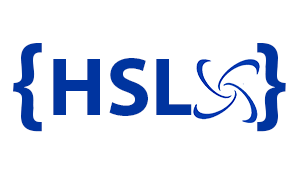Price Optimization Machine Learning
Key Take Aways
* Price optimization machine learning is a game-changer for businesses, allowing for dynamic and competitive pricing strategies.
- Various machine learning algorithms like Linear Regression, Decision Trees, and Neural Networks can be utilized for price optimization.
- Real-world examples of successful price optimization include Uber, Amazon, Netflix, Walmart, and Booking.com.
- Python offers several libraries and frameworks for implementing machine learning-based price optimization strategies.
- A step-by-step approach to price optimization using machine learning involves data collection, cleaning, feature engineering, model building, and evaluation.
- Practice projects for price optimization machine learning include retail price optimization and price optimizing for services, rental properties, and e-commerce stores.
The Power of Price Optimization Machine Learning
Setting the right price for products and services is a pivotal component of a successful business model. Price optimization machine learning, a data-driven methodology, has revolutionized how businesses approach their pricing strategies. With the ability to analyze large volumes of data on sales, customer behavior, and market trends, machine learning algorithms can uncover patterns and relationships that are invisible to the human eye. This helps businesses make informed pricing decisions, fostering revenue growth and increased profits.
Let’s consider a practical example from the insurance industry to understand the impact of price optimization machine learning.
A Case Study: Insurance Pricing Optimization
Consider a hypothetical insurance company, XYZ Insurance. They offer a variety of insurance products but struggle with setting accurate prices for their policies. This has resulted in low customer retention rates and decreased profitability, as their current pricing strategy isn’t data-driven.
By implementing price optimization using machine learning, XYZ Insurance can analyze vast amounts of data on customer behavior, claims history, and market trends. Machine learning algorithms can leverage this data to predict the most accurate prices for each policy, considering factors such as risk, competition, and customer behavior. This can lead to more personalized prices that are competitive and accurate, leading to higher customer satisfaction and retention rates.
Additionally, price optimization can maximize profit margins, increase profitability while still remaining competitive, and automate the pricing process, reducing costs and speeding up policy issuance.
Machine Learning Algorithms for Price Optimization
Several price optimization algorithms can be employed to determine the most effective prices for products or services. Here are some of the most commonly used algorithms:
- Linear Regression: This algorithm predicts sales based on historical data and external factors such as promotions, seasonality, and competition.
- Logistic Regression: It is used when the dependent variable is categorical, such as whether or not a customer will purchase a product.
- Decision Trees: This tree-based algorithm identifies nonlinear relationships between variables and makes predictions based on a series of if-then statements.
- Random Forests: An advanced version of decision trees that uses multiple trees to make predictions and reduce the risk of overfitting.
- Neural Networks: A complex algorithm that learns complex relationships between variables and makes predictions based on hidden layers of neurons.
The choice of algorithm depends on the business goals, available data, and the desired level of complexity.
Real-World Examples of Price Optimization
Several businesses have successfully leveraged machine learning-based pricing strategies to gain a competitive advantage, drive revenue growth, and increase customer satisfaction. Here are a few examples:
- Uber: They use machine learning algorithms to dynamically adjust pricing based on demand, time of day, and traffic conditions.
- Amazon: The e-commerce giant uses machine learning algorithms to optimize prices for millions of products in real-time.
- Netflix: They use machine learning algorithms to optimize prices based on customer behavior, content popularity, and subscription trends.
- Walmart: The retail giant uses machine learning algorithms to optimize prices for their online and in-store products.
- com: The platform uses machine learning algorithms to optimize prices for hotel rooms based on demand, competition, and customer behavior.
Implementing Price Optimization using Python
Python offers several libraries and frameworks that can be used for price optimization using machine learning. Some of these include:
- Scikit-learn: Provides tools for implementing linear regression, logistic regression, decision trees, and random forests.
- TensorFlow: An open-source machine learning framework used to build neural networks.
- Keras: A high-level neural network library that can be used to build complex neural networks.
- PyTorch: An open-source machine learning library used to build neural networks.
- XGBoost: A machine learning library that uses gradient boosting to optimize prices based on historical data.
These libraries and frameworks provide a range of tools and algorithms for implementing machine learning-based price optimization strategies in Python.
A Step-by-Step Approach to Price Optimization
Here is a step-by-step approach to understand how to implement an end-to-end price optimization project using machine learning algorithms in Python:
- Data Collection: Gather data on historical insurance policies, premiums, and information on the insured individuals.
- Data Cleaning and Preprocessing: Clean the data to remove duplicates, missing values, or outliers. Normalize and transform the data to prepare it for machine learning algorithms.
- Feature Engineering: Create new features based on the data that can be used to predict the target variable.
- Split Data into Training and Testing Sets: Split the data into training and testing sets to evaluate the performance of the machine learning algorithms.
- Choose and Implement Machine Learning Algorithms: Choose the appropriate machine learning algorithms to predict the target variable based on the input variables.
- Hyperparameter Tuning: Fine-tune the hyperparameters of the machine learning algorithms to achieve optimal performance.
- Model Evaluation: Evaluate the performance of the models using metrics such as root mean squared error (RMSE), mean absolute error (MAE), and R-squared.
- Deployment: Deploy the model in a web application or API that can predict premiums based on customer characteristics.
Price Optimization Machine Learning Project Ideas
For those seeking to practice and hone their skills in price optimization machine learning, here are five project ideas:
- Retail Price Optimization: Work on the dataset of a cafe and deduce the prices of various food items sold at that cafe using past sales data.
- Price Optimization for Banking Services: Work on a sample dataset to find the optimum prices of services provided by a bank such that the profit is maximum.
- Price Optimization for Rental Properties: Work on the dataset that contains information about certain listings on Airbnb’s website to predict demand and prices of various properties.
- Price Optimization for an E-commerce Store: Learn how to optimize prices of an e-commerce website using the neural network algorithm and particle swarm optimization method.
- Uber Ride Fare-Price Optimization: Work on the Uber Fare Prediction Dataset and deduce prices using a machine learning model based on the various characteristics of a ride.
By undertaking these projects, you can gain practical experience and expertise in price optimization machine learning, setting you on the path to mastering this important aspect of data science.

Are you interested in AI but don’t know where to start? Want to understand the role of an AI Architect? Check out our page and watch our informative video.




